南极磷虾捕捞初期适宜挤压脱壳工艺参数
郑晓伟,沈 建(农业部渔业装备与工程重点开放实验室,中国水产科学研究院渔业机械仪器研究所,国家水产品加工装备研发分中心(上海),上海 200092)
南极磷虾捕捞初期适宜挤压脱壳工艺参数
郑晓伟,沈建
(农业部渔业装备与工程重点开放实验室,中国水产科学研究院渔业机械仪器研究所,国家水产品加工装备研发分中心(上海),上海 200092)
摘要:为了验证南极磷虾挤压脱壳设备的生产效果、完善并优化船上挤压脱壳生产工艺,该文开展了不同进料速度、原料放置时间和预冷时间对得肉率和虾壳残留率影响的研究。结果表明,对于刚捕捞后未经处理的磷虾,试验设备脱壳效果理想,得肉率约为25%、虾壳残留约为5%;放置时间在120 min以内的磷虾均可用作脱壳磷虾肉的生产,越新鲜的磷虾脱壳后得到的磷虾肉品质越好;对原料进行预冷来延长品质保持时间是保证产品质量的有效方法;冷冻后磷虾得肉率明显降低,实际生产中不建议采用。研究结果可为南极磷虾脱壳技术的应用和产业化提供参考。
关键词:工艺;品质控制;渔业;南极磷虾;脱壳;得肉率
郑晓伟,沈建. 南极磷虾捕捞初期适宜挤压脱壳工艺参数[J]. 农业工程学报,2016,32(2):252-257.
Zheng Xiaowei, Shen Jian. Appropriate shelling process parameters of Antarctic krill at initial stage of fishing[J]. Transactions of the Chinese Society of Agricultural Engineering (Transactions of the CSAE), 2016, 32(2): 252-257. (in Chinese with English abstract)doi:10.11975/j.issn.1002-6819.2016.02.036http://www.tcsae.org
0 引 言
南极磷虾是已知最大的单种生物资源,生物资源总量可达数亿吨之多,仅年可捕捞量就接近亿吨[1-3]。随着近海渔业资源的日益匮乏,南极磷虾作为新兴的蛋白资源,越来越受到人们的重视。虽然南极磷虾营养价值非常高[4-8],但由于磷虾氟含量高[9-13]、酶活性强的特性,大多被加工成冷冻饵料和饲料级虾粉,或作为进一步提取虾油的原料,无法实现其蛋白资源的合理利用[14-18]。
由于磷虾体内的氟元素及活性酶集中分布于虾壳及头腹中,因此去除虾壳、生产高品质磷虾肉是实现磷虾高值化利用的有效途径之一。国外早在20世纪六七十年代就开展了磷虾产业发展的研究[19],日本、挪威等国家[20-21]的远洋公司先后研制并成功使用南极磷虾脱壳设备,显著提高了磷虾产品的品质,但出于知识产权保护的原因,其他国对其相关技术内容知之甚少。中国涉足南极磷虾产业的时间较晚,相关加工技术及装备的研究更是近几年才开展,尚处于起步阶段。虽然有学者曾开展超高压对虾类脱壳技术的研究,但很难应用于南极磷虾的船上加工。除郑晓伟等开展了南极磷虾离心、挤压脱壳工艺参数的研究及优化外[22-24],国内未见其他南极磷虾脱壳方面的研究报导。
本文在挤压脱壳工艺参数优化的基础上研制脱壳生产设备,通过设备试验进一步确认该脱壳方法的可行性。重点对设备的进料速度和处理能力、磷虾原料的新鲜度以及预处理储存方式等进行试验研究和分析,为设备投入实际生产和工程化配套提供依据。
1 材料与方法
1.1原料与仪器
本试验所用冷冻磷虾由辽宁远洋渔业有限公司“福荣海”轮于2014年4月在南极CCAMLR 辖区48.1区拖网捕捞所得,−20℃低温冷冻,试验前流水化冻。所用新鲜磷虾由上海开创远洋渔业公司“开利”轮于2015年4月在南极CCAMLR 辖区48.1区拖网捕捞所得。上述试验原料虾为体长在36~44 mm的南极大磷虾,倒入平板冻结机专用冻盘并称量以备用,每盘磷虾原料质量10 kg。以6冻盘原料为一组进行脱壳试验,每次3组,取其平均值。其中,鲜虾脱壳试验在船上完成,冷冻虾脱壳为对照组,在岸上实验室加工。
试验仪器:SJ9-2Ⅱ型电子秒表,精度0.01s;Marel CP9140型电子称,精度0.01 kg;VICTOR 303B型红外线测温仪,购自深圳市胜利高电子科技有限公司;(0~150)mm带表游标卡尺,精度0.01 mm。
1.2脱壳设备
试验用南极磷虾脱壳设备,如图1所示。由中国水产科学研究院渔业机械仪器研究所研制,设备基本参数见表1。原料虾在滚轴的挤压下实现壳肉的分离,虾壳通过挤压送至滚轴下侧,虾肉在水流的作用下从滚轴上侧端面排出。
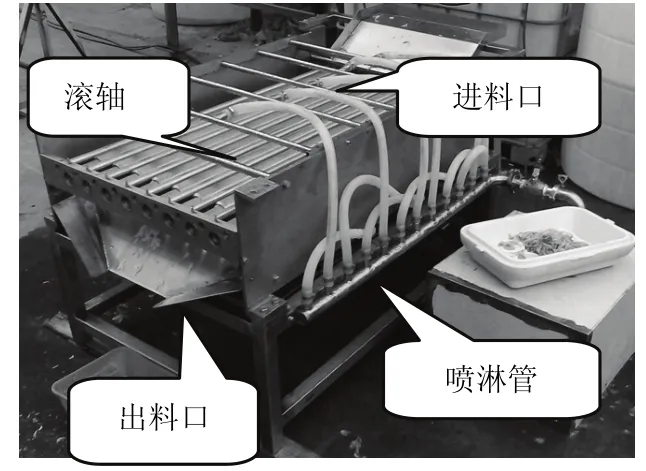
图1 南极磷虾脱壳设备Fig.1 Antarctic krill shelling equipment
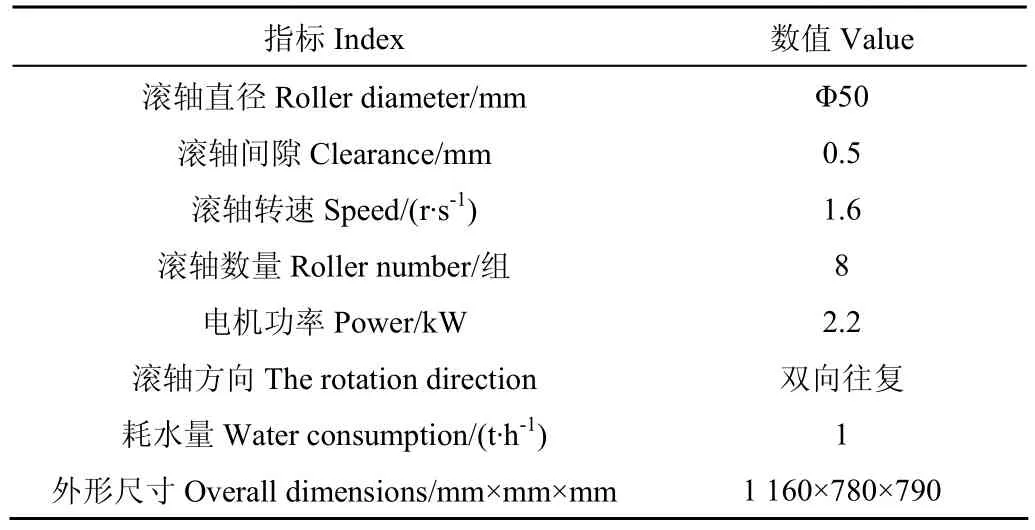
表1 南极磷虾脱壳设备基本参数表Table 1 Basic parameters of antarctic krill shelling equipment
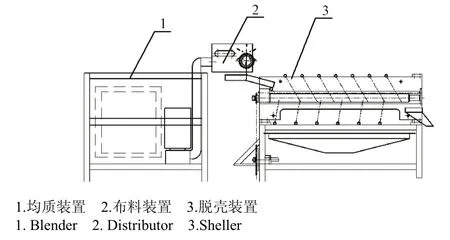
图2 南极磷虾脱壳生产线Fig.2 Antarctic krill shelling production line
1.3脱壳生产线及工艺流程
考虑到设备的结构和船上的空间布局,简化后的脱壳生产线配置如图2所示,主要包括:磷虾原料均匀性装置、布料装置和脱壳设备。
生产工艺说明:由人工控制投料速度,将原料小批量持续均匀地投入料槽;磷虾与水搅拌均匀后由泵送至脱壳机进行脱壳;脱壳后得到的虾仁置于纱布上滤水2 min,再由人工进行分拣,将虾肉中残留的虾壳去除;最后称量并冷冻。
1.4试验方法
1.4.1数据测量
物料质量:使用电子称分别对试验原料虾、脱壳并滤水后的虾肉以及人工分检后得到的虾仁进行称量,数值精确到0.01 kg。
处理时间:使用秒表记录每组6盘磷虾原料的进料时间,以控制投料速度。记录磷虾捕捞后在原料仓的放置时间以及在平板冻结机内的预冷时间,数值精确到1 min。
1.4.2指标测定方法
得肉率:分拣后虾仁的质量与原料质量的比值即为得肉率。
虾壳残留率:人工分拣出残留虾壳的质量与分拣前虾肉质量的比值即为虾壳残留率。
1.4.3影响因素选择
在设备参数固定的条件下,进料速度和原料新鲜度是影响脱壳虾肉品质的主要可控因素。由前期试验可知,进料速度大于70 kg/h时,脱壳效果较差,应适当降低进料速度。而南极磷虾在捕捞上岸后2 h后便会迅速酶解,因此捕捞后放置时间应控制在2 h以内。平板冻结是船上保持磷虾新鲜度的有效方法,为避免原料完全冻结,预冷时间也不易过长。
1.4.4脱壳效果感官评价
感官评定由5名具有南极磷虾船上生产经验的船员组成,对脱壳后虾肉的完整度、虾壳残留、饱满度及洁净度进行评价。感官评定标准见表2。
1.5数据分析与处理
用Microsoft Excel 2010软件对磷虾基础数据、加工数据及感官评价分数进行统计分析并绘图。应用SPSS19.0.0统计软件,对数据进行方差分析,P<0.05表示差异显著,P>0.05表示差异不显著。

表2 南极磷虾感官评定表Table 2 Sensory evaluation standard of antarctic krill
2 结果与分析
2.1进料速度对得肉率和虾壳残留率的影响
以得肉率和虾壳残留率为指标,分别在30、40、50、 60、70 kg/h的进料速度下比较刚捕获、未经放置和预冷的磷虾的脱壳效果,试验数据如图3所示。不同进料速度下得肉率差异不显著(P>0.05),而不同进料速度下虾壳残留率差异显著(P<0.05)。总体而言,脱壳效果比较理想,随着进料速度的提升,虾肉间摩擦的增加使得肉率缓慢下降,当进料速度控制在50 kg/h以下时,保持在25%左右。同时,随着进料速度的提升,脱壳虾肉的虾壳残留率呈上升趋势。当进料速度高于60 kg/h时,由于超出了设备的处理能力,残留率的上升幅度明显增加,从4%陡增至30%以上。
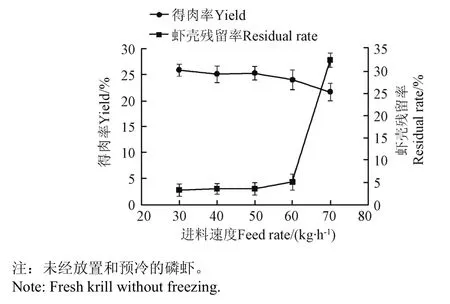
图3 进料速度对得肉率和虾壳残留率的影响Fig.3 Effects of feed rate on yield and residual rate
不同进料速度下脱壳虾肉的感官评价如图4所示。在不同进料速度下,虾肉的完整度均能达到比较理想的水平,差异不显著(P>0.05),洁净度次之。虾壳残留受进料速度的影响最为明显(P<0.05),尤其在脱壳速度大于60 kg/h以后,虾壳残留显著增加。主要表现为虾肉表面仍然带有整段的虾壳,无法通过人工进行快速分离,且带壳虾肉的数量明显增多,严重影响分检效率。这与图3中得肉率和虾壳残留率数值的变化趋势基本一致,说明试验所用的具有八组滚轴的磷虾脱壳设备额定处理能力约为60 kg/h。若要获得高品质磷虾肉,进料速度应控制在50 kg/h左右。
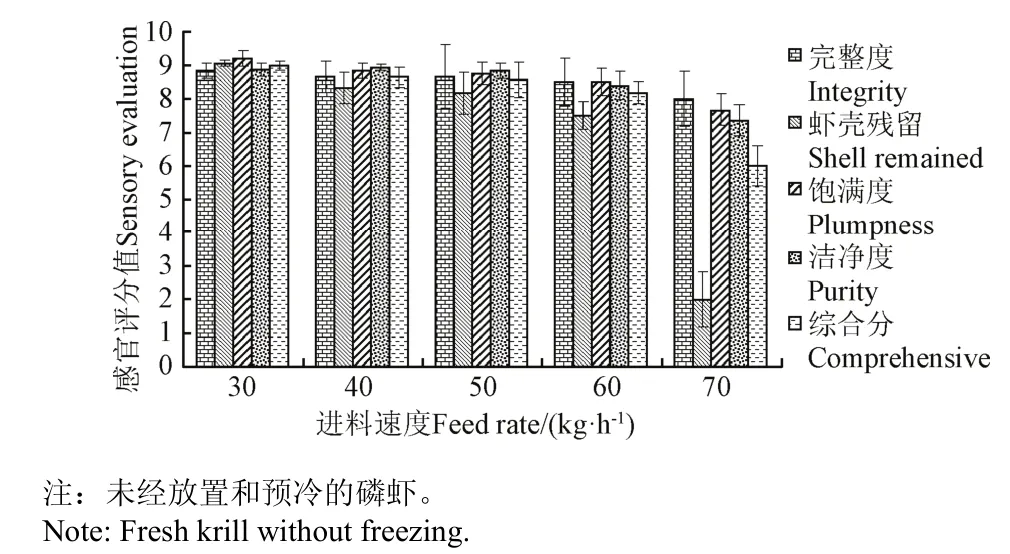
图4 进料速度对脱壳虾肉感官品质的影响Fig.4 Effects of feed rate on quality of shrimp
2.2放置时间对得肉率和虾壳残留率的影响
在前期试验的基础上,指定进料速度为50 kg/h,将捕捞上来的磷虾放置在加工间原料仓并保持一定时间,分别对捕捞后放置0、30、60、90、120 min后的磷虾进行脱壳试验,试验数据如图5所示。南极磷虾的得肉率和虾壳残留率均在合理的范围内浮动,不同放置时间下得肉率和虾壳残留率差异均不显著(P>0.05)。
不同放置时间下脱壳虾肉的感官评价如图6所示。不同放置时间下脱壳虾肉的完整度差异不显著(P>0.05),而虾壳残留率、饱满度和洁净度都有显著变化(P<0.05)。主要表现为虾肉逐渐由透明转为乳白色,虾肉的弹性及表面光滑度也明显下降。此外,由于油脂和可溶性蛋白的析出,使虾肉表面容易附着大量的微小气泡,难以有效滤除,明显影响脱壳磷虾肉的产品质量。总体而言,放置时间在120 min以内的磷虾均可用作脱壳磷虾肉的生产,可获得理想的得肉率和虾壳残留率。越新鲜的磷虾,脱壳后得到的磷虾肉感官品质越好。而放置时间超过120 min的磷虾由于容易产生虾肉酶解和氟元素转移的问题[2],不建议用于脱壳生产。

图5 放置时间对得肉率和虾壳残留率的影响Fig.5 Effects of storage time on yield and residual rate
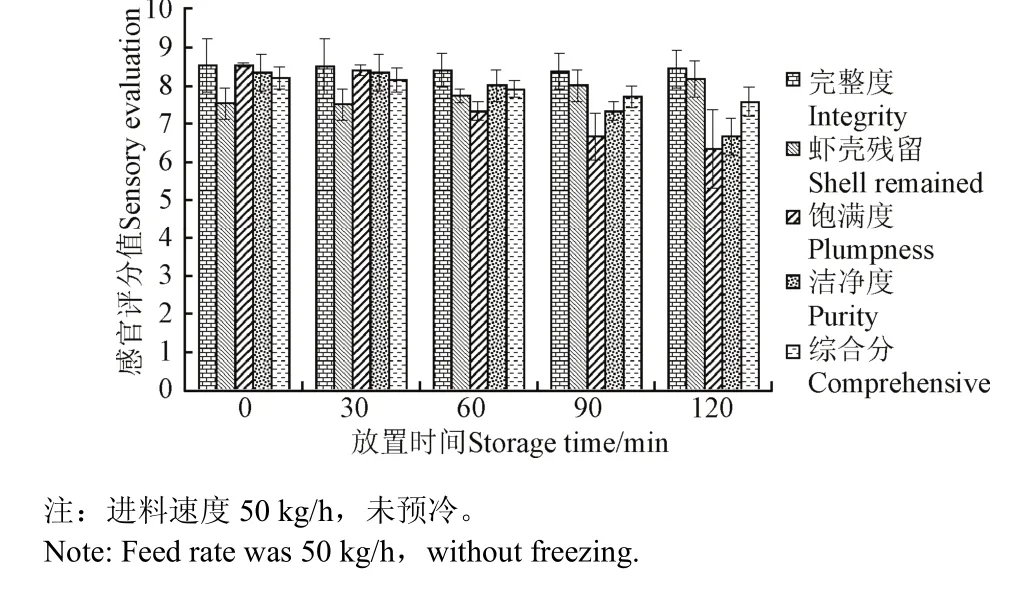
图6 放置时间对脱壳虾肉感官品质的影响Fig.6 Effects of storage time on quality of shrimp
2.3预冷时间对得肉率和虾壳残留率的影响
在前期试验的基础上,指定进料速度为50 kg/h,将捕捞上来的磷虾放置在船上−18℃冷库内进行速冻预冷,分别对预冷0、30、60、90 min后的磷虾流水解冻后进行脱壳试验,试验数据如图7所示。不同预冷时间下的得肉率和虾壳残留率差异不显著(P>0.05),南极磷虾的得肉率和虾壳残留率分别在24%和5%左右,与新鲜磷虾的脱壳效果相差不大,生产效果理想。
不同预冷时间下脱壳虾肉的感官评价如图8所示。完整度、饱满度等感官指标均无显著变化(P>0.05)、处于较稳定和理想的状态,说明对原料进行预冷具有保持脱壳虾肉品质、提升产品质量的作用。但由于预冷工序会增加劳动力及生产成本,实际生产中若能持续捕捞新鲜磷虾用于生产,则无需采用预冷工序。而当原料紧缺或无法连续捕捞时,对部分原料进行短时间预冷来加长品质保持时间则是保证产品质量的有效方法。由于磷虾的最佳加工时间为捕捞后2 h内,为了最大程度保证磷虾的加工质量,捕捞后放置或预冷时间均不宜过长。
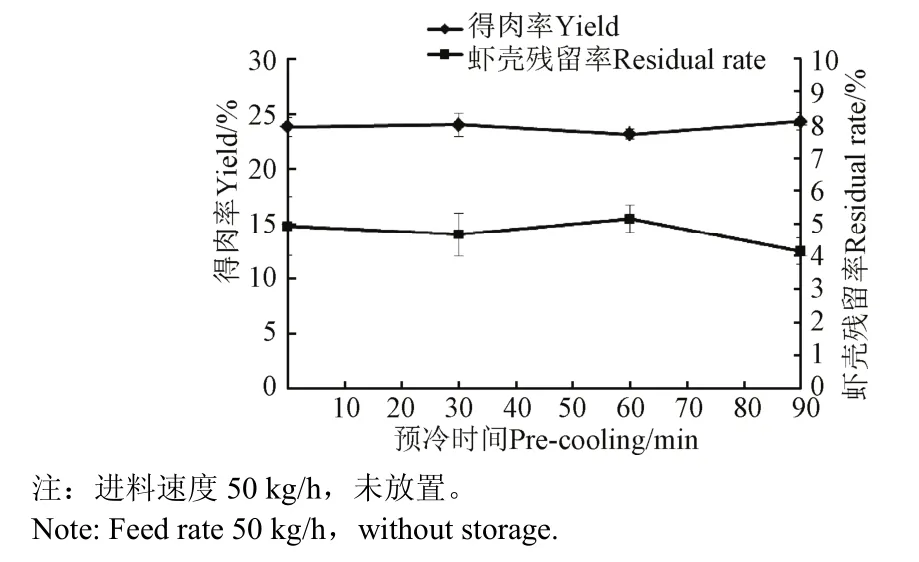
图7 预冷时间对得肉率和虾壳残留率的影响Fig.7 Effects of pre-cooling on yield and residual rate
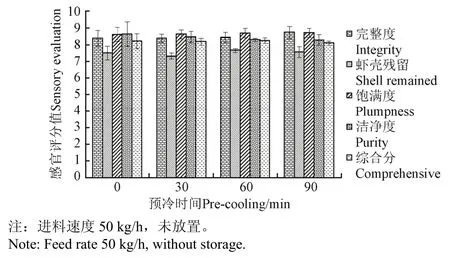
图8 预冷时间对脱壳虾肉品质的影响Fig.8 Effects of pre-cooling on quality of shrimp
2.4冷冻南极磷虾脱壳效果
根据船上脱壳设备的试验结果,选择进料速度为50 kg/h,在岸上用相同的工艺流程对长时间冷冻后的磷虾进行脱壳试验,解冻及脱壳过程中所用的水均为淡水,不容易产生气泡。平均得肉率为16.8%,虾壳残留率<1%,虾壳残留少、虾肉泛白略带红色。
南极磷虾在长达数月的冷冻过程中品质不断下降,虾肉由新鲜时候的半透明变为乳白色,与用新鲜磷虾加工25%左右的得肉率相比,冷冻后磷虾平均得肉率明显降低。但由于虾肉的蛋白变性及虾壳的软化,脱壳后虾壳残留率却有所降低。因此,用冷冻后的磷虾进行脱壳加工无明显优势,不建议采用。
3 结 论
1)试验所用的8滚轴组的磷虾挤压脱壳设备能有效地去除虾壳,进料速度在30~70 kg/h时新鲜南极磷虾的得肉率随着进料速度的提升而缓慢下降(P>0.05),当进料速度在50 kg/h以下时,得肉率相对比较稳定,保持在25%左右。随着进料速度的提升,脱壳虾肉的虾壳残留率呈上升趋势,当进料速度高于60 kg/h时,残留率上升幅度明显增加(P<0.05);
2)放置时间在120 min以内的磷虾均可用作脱壳磷虾肉的生产,得肉率最高约为25%,虾壳残留率<14%。越新鲜的磷虾,脱壳后得到的磷虾肉感官品质越好;
3)在0~90 min的预冷时间下,南极磷虾的得肉率和虾壳残留率分别在24%和5%左右,与新鲜磷虾的脱壳效果相差不大(P>0.05),生产效果理想。当原料紧缺或无法连续捕捞时,对部分原料进行短时间预冷来加长品质保持时间则是保证产品质量的有效方法;长时间冷冻后磷虾得肉率明显降低(P<0.05)。
4)推荐的生产条件为:进料速度60 kg/h,放置时间<120 min,预冷时间<90 min。放置时间尽可能短,原料虾充足时无需预冷。
[参考文献]
[1] 田晓清,杨桥,邵盛男,等. 南极磷虾脂溶性成分的研究进展[J]. 海洋渔业,2011,33(4):462-466. Tian Xiaoqing, Yang Qiao, Shao Shengnan, et al. The research progress of ester-soluble constituents of Antarctic krill[J]. Marine Fisheries, 2011, 33(4): 462-466. (in Chinese with English abstract)
[2] 陈雪忠,徐兆礼,黄洪亮. 南极磷虾资源利用现状与中国的开发策略分析[J]. 中国水产科学,2009,16(3):451-458. Chen Xuezhong, Xu Zhaoli, Huang Hongliang. Development strategy on Antartic krill resource utilization in China[J]. Journal of Fishery Sciences of China, 2009, 16(3): 451-458. (in Chinese with English abstract)
[3] 吴伟平,谢营樑. 南极磷虾及磷虾渔业[J]. 现代渔业信息,2010,25(1):10-13. Wu Weiping, XieYingliang. Antarctic Krill and Krill Fishery[J]. Modern Fisheries Information, 2010, 25(1): 10-13. (in Chinese with English abstract)
[4] 朱国平,吴强,冯春雷,等. 基于渔业调查的南极半岛北部水域南极磷虾种群年龄结构分析[J]. 生态学报,2011,31(16):4620-4627. Zhu Guoping, Wu Qiang, Feng Chunlei, et al. Population age structure of Antarctic krill Euphausia superba off the northern Antarctic Peninsula based on fishery survey[J]. Acta Ecologica Sinica, 2011, 31(16): 4620-4627. (in Chinese with English abstract)
[5] 刘丽,刘承初,赵勇,等. 南极磷虾的营养保健功效以及食用安全性评价[J]. 食品科学,2010,31(17):443-447. Liu Li, Liu Chengchu, Zhao Yong, et al. Recent Advances in the Healthcare Function and Food Safety of Antarctic Krill[J]. Food Science, 2010, 31(17): 443-447. (in Chinese with English abstract)
[6] 徐吟梅,邱卫华,余丽,等. 南极磷虾粉的营养与功能[J].现代渔业信息,2010,25(8):14-16. Xu Yinmei, Qiu Weihua, Yu Liping, et al. Nutrition composition and function of Antarctic krill meal [J]. Modern Fisheries Information, 2010, 25(8): 14-16. (in Chinese with English abstract)
[7] 李学英,迟海,杨宪时,等. 南极磷虾冷藏过程中的品质变化[J]. 食品科学,2010,31(20):464-468.Li Xueying, Chi Hai, Yang Xianshi, et al. Quality change of Antarctic krill during chilling storage [J]. Food Science, 2010,31(20): 464-468. (in Chinese with English abstract)
[8] Anita H Poulsen, So Kawaguchi, Jussi VK Kukkonen, et al. Aqueous uptake and sublethal toxicity of p,p’-DDE in non-feeding larval stages of Antarctic krill [J]. Environmental Pollution, 2012, 160(1): 185-191.
[9] Joseph C Gigliotti, Matthew P Davenport, Sarah K Beamer,et al. Extraction and characterisation of lipids from Antarctic krill[J]. Food Chemistry, 2011, 125(3): 1028-1036.
[10] Jon Øvrvum Hansen, Karl D Shearer, Margareth Øverland, et al. Replacement of LT fish meal with a mixture of partially deshelled krill meal and pea protein concentrates in diets for Atlantic salmon (Salmo salar)[J]. Aquaculture, 2011, 315(3): 275-282.
[11] Bunji Yoshitomi, Ichiro Nagano. Effect of dietary fluoride derived from Antarctic krill (Euphausia superba) meal on growth of yellowtail (Seriola quinqueradiata)[J]. Chemosphere,2012, 86(9): 891-897.
[12] Bunji Yoshitomi. Utilization of Antarctic krill for food and feed[J]. Developments in Food Science, 2004, 42: 45-54.
[13] Bunji Yoshitomi, Masatoshi Aoki, Syun-ichirou Oshima. Effect of total replacement of dietary fish meal by low fluoride krill (Euphausia superba) meal on growth performance of rainbow trout (Oncorhynchus mykiss) in fresh water[J]. Aquaculture, 2007, 226(1/4): 219-225.
[14] 吕传萍,李学英,杨宪时,等. 南极磷虾酶解工艺的研究[J].湖南农业科学,2011,31(17):130-133. Lü Chuanping, Li Xueying, Yang Xianshi, et al. Technology of enzymolysis for Euphausia superba[J]. Hunan Agricultural Sciences, 2011, 31(17): 130-133. (in Chinese with English abstract)
[15] 唐琳,屠康,潘磊庆,等. 基于气味与颜色的脊尾白虾新鲜度评价[J]. 农业工程学报,2011,27(9):344-348. Tang Lin, Tu Kang, Pan Leiqing, et al. Evaluation of E.carinicauda freshness based on odor and color models[J]. Transactions of the Chinese Society of Agricultural Engineering (Transactions of the CSAE), 2011, 27(9): 344-348. (in Chinese with English abstract)
[16] 刘国艳,袁庆,柴春彦. 检测鱼肉新鲜度的酶生物传感器的研制[J]. 中国动物检疫,2006,23(1):28-30. Liu Guoyan, Yuan Qing, Chai Chunyan. Research on the enzyme-bioseor for detecting fish freshness[J]. Chinese Journal of Animal Quarantine, 2006, 23(1): 28-30. (in Chinese with English abstract)
[17] 常耀光,李兆杰,薛长湖,等. 超高压处理对南美白对虾在冷藏过程中贮藏特性的影响[J]. 农业工程学报,2008,24(12):230-237. Chang Yaoguang, Li Zhaojie, Xue Changhu, et al. Effects of ultra high pressure treatment on storage characteristics of white shrimp in cold storage[J]. Transactions of the Chinese Society of Agricultural Engineering (Transactions of the CSAE), 2008, 24(12):230-237. (in Chinese with English abstract)
[18] Al-Dagal M M, Bazaraa W A. Extension of shelf life of whole and peeled shrimp with organic acid salts and bifidobacteria[J]. Journal of Food Protection, 1999, 62: 51-56.
[19] So Kawaguchi, Stephen nicol. Learning about Antarctic krill from the fishery[J]. Antarctic Science, 2007, 19(2): 219-230.
[20] 郭南麟,陈雪忠,陈思行,等. 发展我国南极磷虾渔业的探讨[J]. 海洋渔业,1996,18(2):58-66. Guo Nanlin, Chen Xuezhong, Chen Sixing, et al. On The development of Antarctic krill fisheries in China[J]. Marine Fisheries, 1996, 18(2): 58-66. (in Chinese with English abstract)
[21] 李显森,左涛,赵宪勇,等. 南极磷虾商业捕捞动态[J]. 齐鲁渔业,2010,27(1):8-11. Li Xiansen, Zuo Tao, Zhao Xianyong, et al. Antarctic krill (Euphausia superba) fishery: recent fishing situations[J]. Shandong Fisheries, 2010, 27(1): 8-11. (in Chinese with English abstract)
[22] 郑晓伟,欧阳杰,沈建. 南极磷虾离心脱壳工艺参数的研究[J]. 食品工业科技,2012,33(3):183-185. Zheng Xiaowei, Ouyang Jie, Shen Jian. Research on the process parameters of centrifugal shelling of Antarctic krill[J]. Science and Technology of Food Industry, 2012, 33(3): 183-185. (in Chinese with English abstract)
[23] 郑晓伟,沈建,蔡淑君,等. 南极磷虾等径滚轴挤压剥壳工艺优化[J]. 农业工程学报,2013,29(增刊1):286-293. Zheng Xiaowei, Shen Jian, Cai Shujun, et al. Process optimization of roller extruder with equal diameter of antarctic krill[J]. Transactions of the Chinese Society of Agricultural Engineering (Transactions of the CSAE), 2013,29(Supp.1): 286-293. (in Chinese with English abstract)
[24] 郑晓伟,沈建,蔡淑君. 南极磷虾虾肉制取技术初步研究[J].海洋渔业,2013,35(1):102-107. Zheng Xiaowei, Shen Jian, Cai Shujun. Preliminary study on the peelilng technology of Antarctic krill[J]. Marine Fisheries,2013, 35(1): 102-107. (in Chinese with English abstract)
Appropriate shelling process parameters of Antarctic krill at initial stage of fishing
Zheng Xiaowei, Shen Jian
(Key Lɑborɑtory of Fishery Equipment ɑnd Engineering, Ministry of Agriculture, Fishery Mɑchinery ɑnd Instrument Reseɑrch Institute,Chinese Acɑdemy of Fishery Sciences, Nɑtionɑl R&D Brɑnch Center For Aquɑtic Product Processing Equipment, Shɑnghɑi 200092, Chinɑ)
Abstract:The Antarctic krill is a marine organism with a large number. It has great value of development and utilization. As a new protein resource, Antarctic krill will get more and more attention since the offshore fishery resources are dwindling. Although the Antarctic krill has a high value of nutrition, it is hard to process because of its high fluorine content and strong enzyme activity. The krill has to be processed within 2 h on the ship after fishing in order to maintain its quality. Shelling is one of the effective methods to improve the quality of krill product. In previous studies peeling method was researched in order to get integral meat of Antarctic krill. Parameters such as body length and body weight of Antarctic krill that was just caught up were also measured. And we know that the peeling process conditions got from the response surface for Antarctic krill had a certain value in use and the method could be used on the ship. So the shelling prototype was developed and tested on the ship. In order to verify the krill shelling equipment and improve the production process, the research focused on the impacts of feeding rate, storage time and pre-cooling on shelling yield and residual rate, which would provide the bases for the practical production. The production process was considered carefully. Feeding speed was controlled by manpower in order to put the krill into a trough evenly. Then the krill would be pumped to the shelling machine after evenly mixing with water. The shrimp was put on the gauze for 2 min to filter the water after shelling, and then residual shells in shrimp were removed by manpower. The last processes were weighing, packaging and frozen. Test equipment unit was designed as 8 groups of rollers with reciprocating rotation. Yield was one of the most important indices for the evaluation of equipment ability, and residual rate was the other. The product quality of shrimp meat needed to be judged by sensory evaluation. The sensory evaluation team was made up of 5 seafarers who had a lot of experience of krill production on board. The comprehensive point was based on the integrity of shrimp, shell residue, plumpness and cleanliness. The results showed that the yield was about 24% and the residual rate was about 5%, and the shelling equipment was reliable. The yield of shelling from fresh Antarctic krill reduced slowly with the increasing of the feeding speed. It was relatively stable when the feeding speed was under 50 kg/h. And the residual rate was on the rise with the increasing of the feeding speed. When the feeding speed was higher than 60 kg/h, the residual rate of shrimp shell increased significantly. The krill with the storage time of less than 120 min could be used for production. Freshness is the most important factor in the quality of shrimp meat. Pre-cooling is an effective way to maintain shrimp quality. Frozen shrimp is not recommended to be used because the yield of shrimp meat will become lower significantly.
Keywords:processing; quality control; fisheries; Antarctic krill; shelling; meat yield
作者简介:郑晓伟,男,副研究员,主要从事水产品加工技术装备的研究。上海市赤峰路63号中国水产科学研究院渔业机械仪器研究所,200092。Email:zhengxiaowei@fmiri.ac.cn
基金项目:国家“863”高技术研究发展计划资助项目(2011AA090801)
收稿日期:2015-08-12
修订日期:2015-12-26
中图分类号:TS254.4
文献标志码:A
文章编号:1002-6819(2016)-02-0252-06
doi:10.11975/j.issn.1002-6819.2016.02.036 10.11975/j.issn.1002-6819.2016.02.036http://www.tcsae.org

